Costa Rica is known for its nature and biodiversity. From golden sand beaches down its long coastlines to the volcano and jungle-filled interior, it’s one of the most diverse countries in Central America. Much of this beautiful natural environment is teeming with wildlife, making Costa Rica a popular destination for animal lovers and nature enthusiasts alike.
*This post may contain affiliate links, as a result, we may receive a small commission (at no extra cost to you) on any bookings/purchases you make through the links in this post. As an Amazon Associate, we earn from qualifying purchases. Read our full disclosure
With more marine territory than land, Costa Rica boasts more wildlife in the water than it does onshore. With extensive Pacific Ocean and Caribbean Sea coastlines, Costa Rica is home to an abundance of sea turtles, sea birds, tropical fish, manta rays, dolphins, and, of course, whales.
For those looking to catch a glimpse of the largest marine mammals, Costa Rica is one of the top whale-watching destinations in the world. With the longest humpback whale season and an almost year-round chance to see these impressive animals, Costa Rica should be at the top of your bucket list for best whale-watching tours.
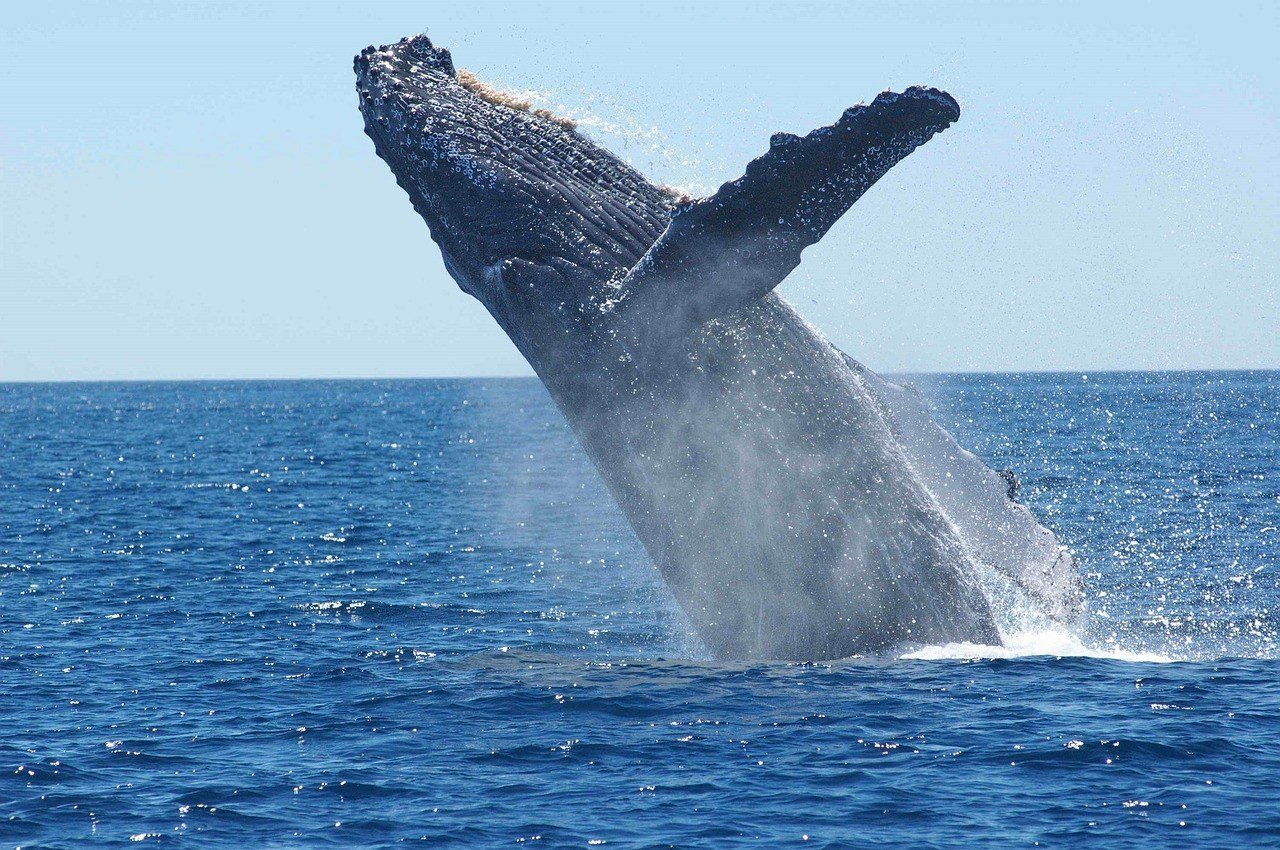
Traveling Soon? Here is a list of our favourite travel providers and accessories to help get you ready for your upcoming trip!
Why Choose Costa Rica for Whale Watching?
As already mentioned, Costa Rica is regarded as one of the best whale watching destinations in the world.
The warm tropical waters around the coast mean that both southern and northern hemisphere humpback whales migrate through Costa Rica during different times of the year. For this reason, it has one of the longest whale watching seasons in the world, making it much easier to plan your trip around specific whale watching tours.
Costa Rica also has strong conservation values protecting its marine biodiversity. If you’re looking for eco-friendly whale watching tours by operators who are passionate about protecting these incredible marine mammals, you’ll be spoilt for choice in Costa Rica.
Whale Species Found in Costa Rica
Costa Rica is most famous for migratory humpback whales, but the country also sees other whales and dolphins, with as many as 34 species reported in Costa Rica’s waters.
Humpback Whales
Humpback whales pass through Costa Rica from both the Southern and Northern Hemispheres, making them the most commonly seen whales offshore. This is what makes Costa Rica such a unique place for whale watching.
The three main species of humpback whales that you can see in Costa Rica include: California Humpback Whales, Antarctic Humpback Whales, and North Atlantic St Lawrence Humpback Whales.
The Southern Hemisphere humpback whales travel from as far as Antarctica to Costa Rica from late July through October to breed in the warmer waters. It’s considered the longest migration in the animal kingdom, as they travel up to 8000 km over several months in search of warmth to have their calves.
The Northern Hemisphere whales head to different parts of Central America from Alaska from the months of December to March, also in search of warm water for breeding as it helps the young ones to thrive and survive in their first few months. Females who mated twelve months earlier give birth to a single calf that grows to at least 8 meters (26 feet) over the first year as it feeds on milk.
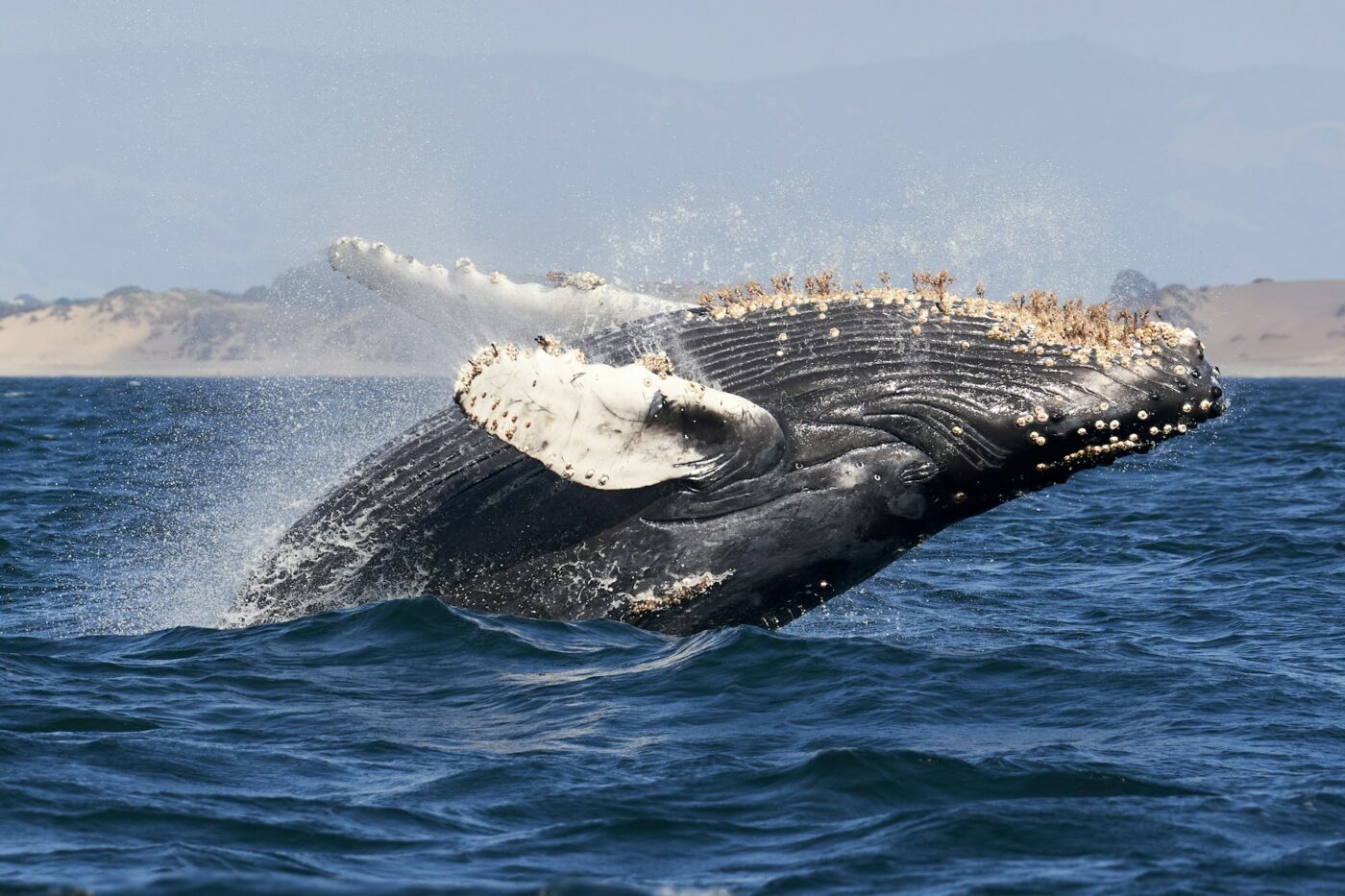
Bryde’s Whales
Bryde’s whales are one of the least known types of baleen whale species. Also known as ‘tropical whales’ due to their preference for warm water, adult Bryde’s Whales can grow up to 15m long and weigh up to 30 tonnes. The most distinguishing feature of the Bryde’s Whale is the three parallel ridges running from the blowhole to the tip of the v-shaped snout.
They’re much more elusive than humpback whales, but you can see them year-round in Costa Rica’s waters as they do not migrate as far to colder temperatures.
Orcas
Pseudo-Orca Whales or Killer Whales are not as common in Costa Rica, but it’s still possible to observe them from November until April. They tend to prefer cooler temperatures, so you’re more likely to see them off the Guanacaste coast in northern Costa Rica.
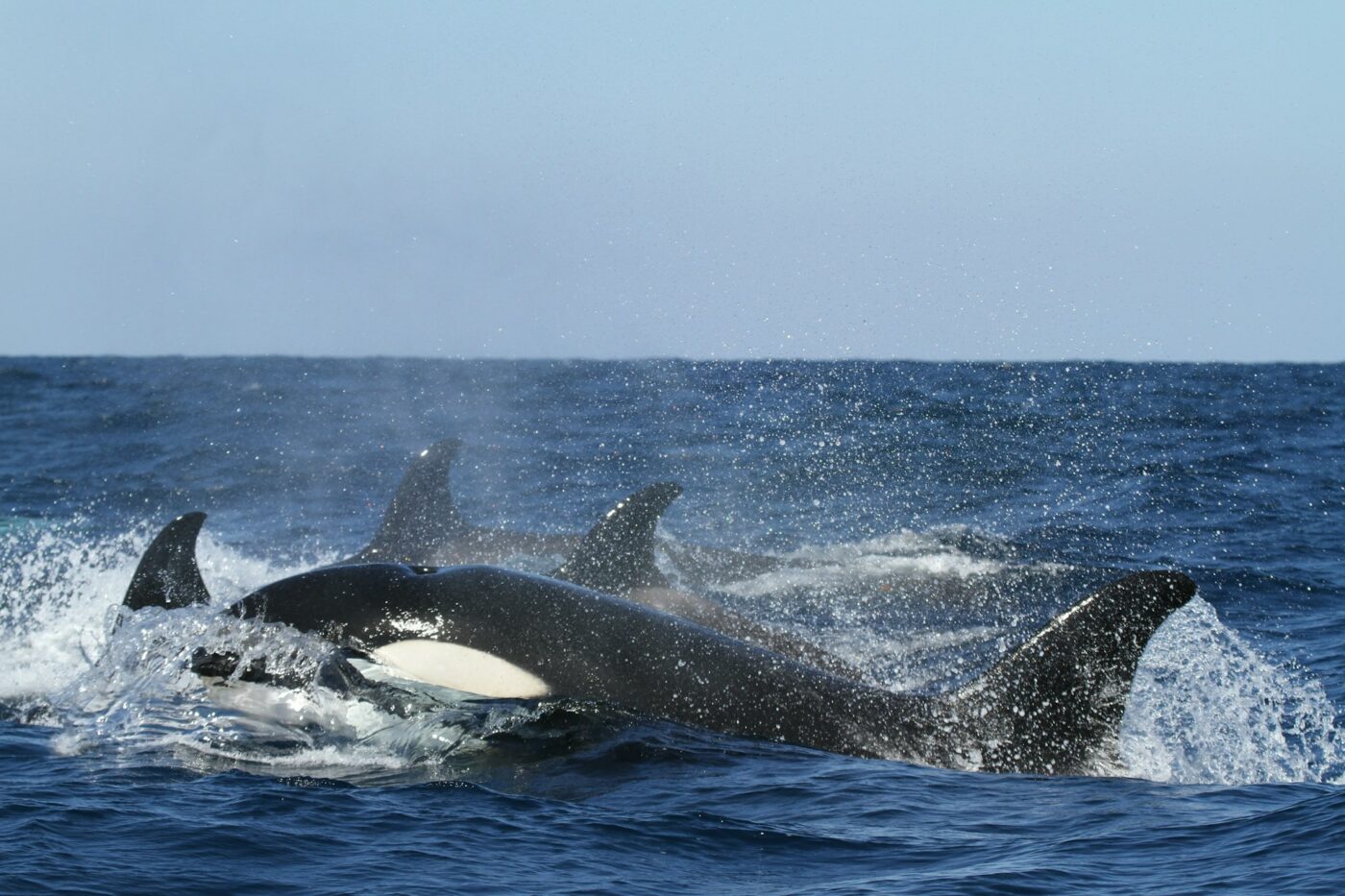
Pilot Whales
Swimming through wide waters, a large number of Pilot Whales stay in Costa Rican territory, especially from December until April around the Nicoya Peninsula. They are, in fact, the second largest oceanic dolphin despite their name. Their Latin name, Globicephala, means ’round head’, which is one of the main identifying features of the species.
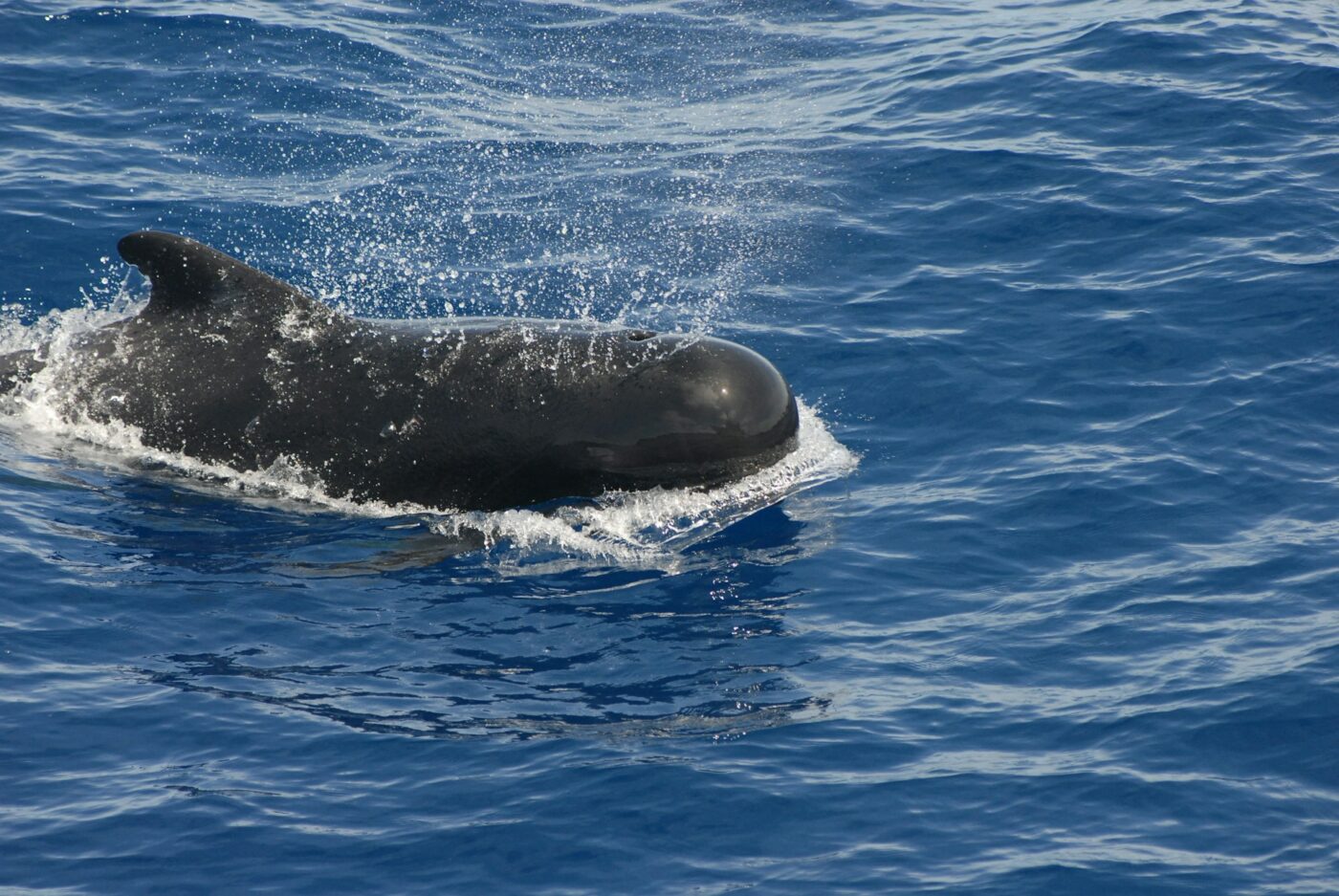
Dolphins
Dolphins can be seen all year round in Costa Rica. There are several dolphin species you can see, including Spotted Dolphins, Bottlenose Dolphins, Spinner Dolphins, Rough-Toothed Dolphins, and the Common Dolphin.
There are a couple of breeding seasons when the dolphins are more active, especially from July through October and December through March.
Most whale watching tours also include dolphin watching, so you’ll have a chance to spot a bottlenose dolphin as well as a humpback whale from the boat.
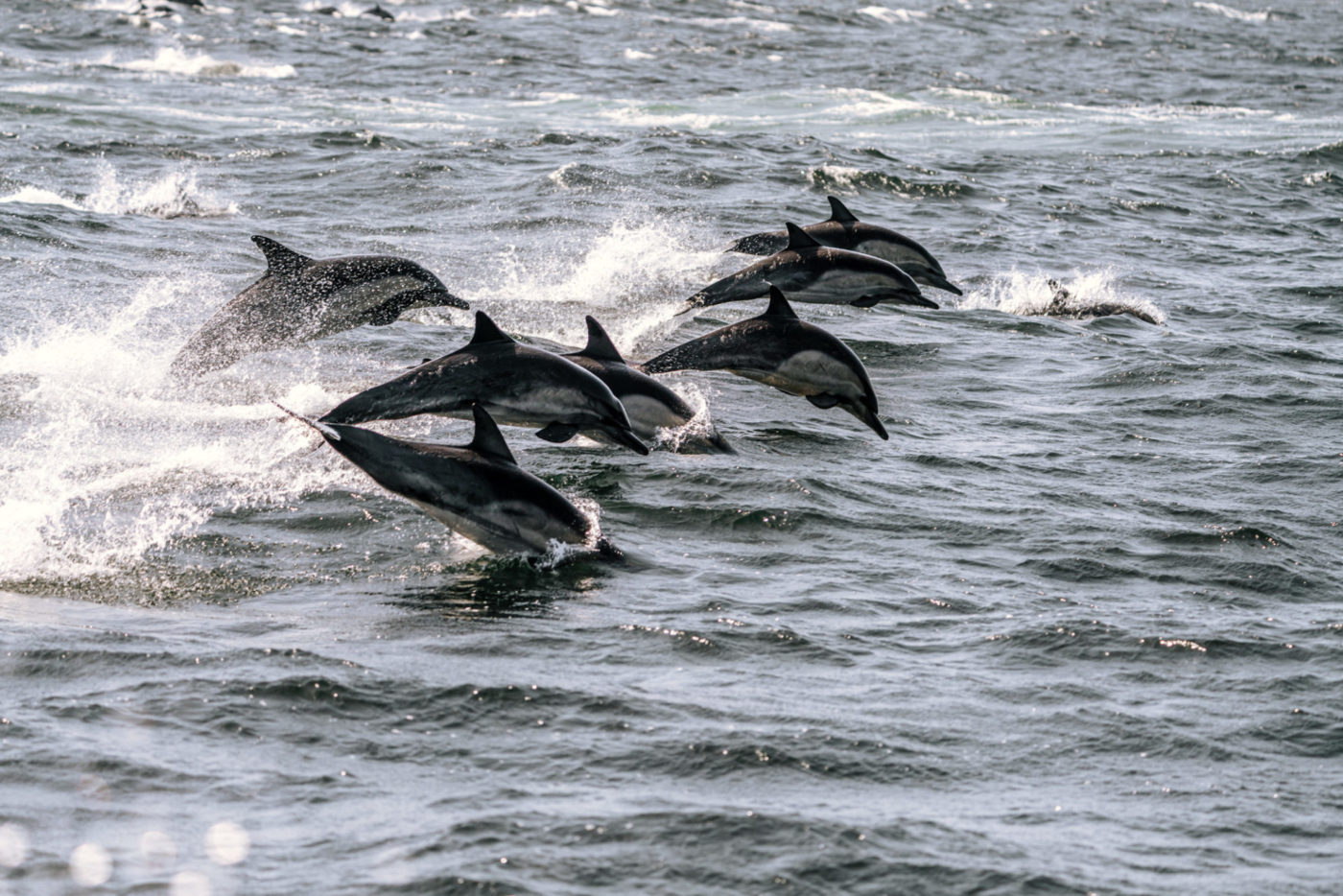
Whale Watching in Costa Rica: When to Go
Costa Rica has one of the longest whale watching seasons in the world, with the chance to see humpback whales for 9 of the 12 months each year. However, as humpback whales are migratory, there are certain months when they are more active, and your chance of seeing them increases exponentially.
The Antarctic whales travel from as far as Antarctica to Costa Rica from late July through October, while Northern Hemisphere whales head to Central America from Alaska from December to March.
However, the best overall months to see humpback whales in Costa Rica are January and February and again in August and September. This is when they are more active and abundant as it’s peak breeding time.
Daily sightings are most common during the August-September period, especially on the southern Pacific Coast, because the southern Antarctic Humpback Whales migrate in much more abundant schools closer to shore.
Annual Whale and Dolphin Festival
If you want to time your visit for the ultimate whale watching event, then head to Uvita in early September for the Annual Whale and Dolphin Festival. Timed perfectly for the southern humpbacks as they migrate through Costa Rican waters on the Pacific coast, the festival is one of the best ways to guarantee your chances of spotting whales in Costa Rica.
During the festival, you can easily jump on two-hour whale watching tours with local operators, as well as enjoy live music, running and biking races, and child-friendly activities in the small town on the coast.
Best Places to Go Whale Watching in Costa Rica
Whales can be spotted on both coastlines, making it a very unique destination for whale watching tours. However, Costa Rica’s Pacific Coast is much more popular, with many towns offering boat tours throughout the year.
The whales migrating through the Caribbean are much more spread out and can be more difficult to spot, plus the east coast of Costa Rica is much more sparsely populated, with fewer towns catering to tourists.
This is the Pacific Coast is considered the best for whale watching tours.
Uvita
Uvita is a small beach town on the South Pacific coast just 17 km south of Dominical and Manuel Antonio. Known for its rich natural beauty and biodiversity, it’s the main base for exploring Marino Ballena National Park. The waters off the coast are filled with sea turtles, dolphins, tropical fish, and whales, which is quite fitting of its whale’s tail sandbar that juts out into the ocean near town.
In fact, it’s one of the few towns that sees an abundance of humpback whales during both migrations in the year.
For this reason, Uvita has become the best place for whale and dolphin tours in Costa Rica, with many operators offering boat tours for humpback whale watching.
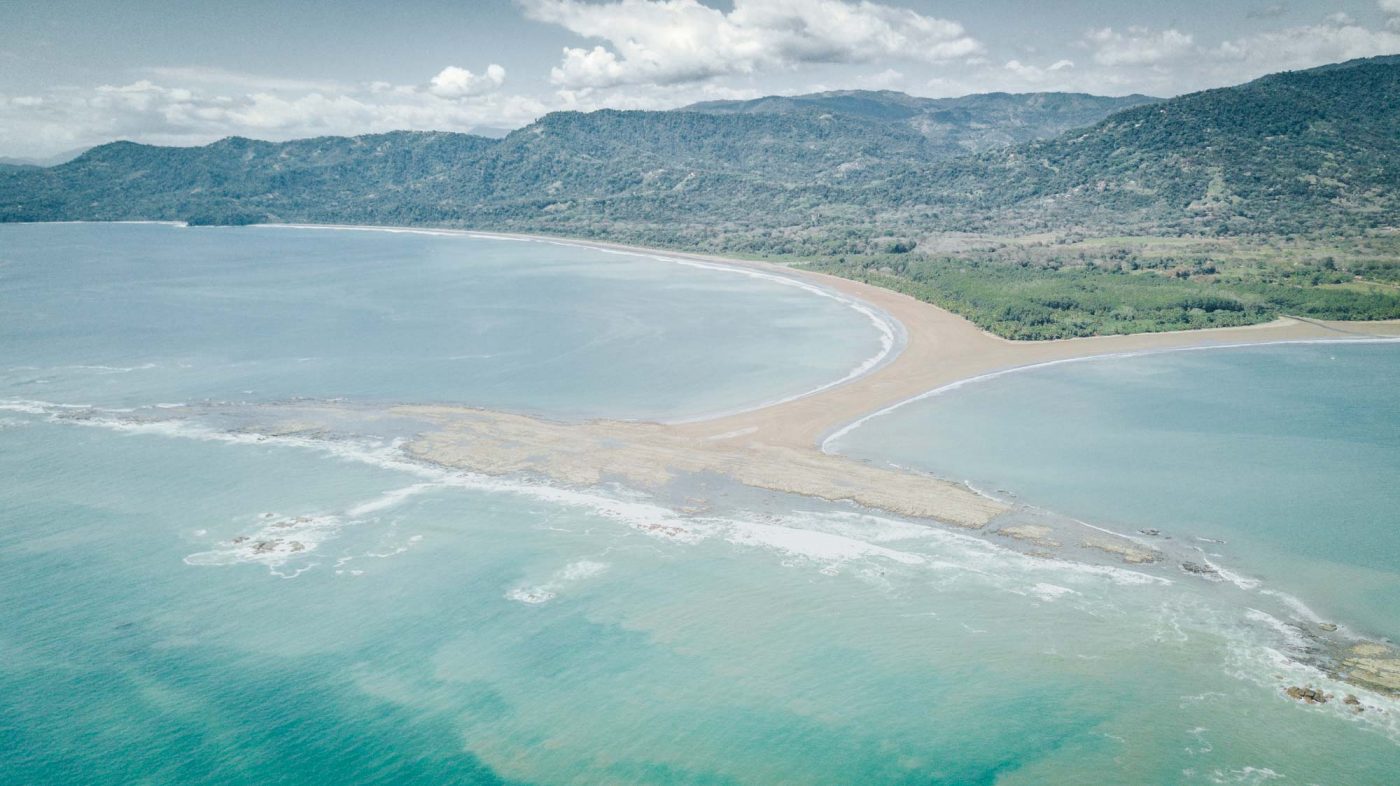
Marino Ballena National Park
Marino Ballena National Park was named after the migratory humpback whales that pass through the offshore waters each year. It was the first Costa Rican protected wildlife area established exclusively for its marine life, offering protected waters for the majestic whales seeking warm temperatures for their young.
The best way to spot a humpback whale in Marino Ballena is on a whale watching tour. These tours navigate the waters off the coast allowing you get a closer look at these huge mammals.
Isla del Caño
Caño Island Biological Reserve, located a few hours south of Uvita, is considered one of the best places to go snorkeling and scuba diving. The protected marine reserve is also home to large mammals. A boat tour to Cano Island offers a chance to see an array of marine species including whales, dolphins, sharks, whale sharks, manta rays and groups of fish.
You can combine a whale watching tour from Drake Bay with a snorkeling excursions to Cano Island, where you’ll be able to explore the crystal clear waters and thriving coral reef home to other marine life.
Drake Bay
If you want to get away from the busy tourist towns, then head down to the remote Drake Bay on the Osa Peninsula.
The journey to Drake Bay involves a 6-hour drive from San Jose, followed by a bumpy boat ride through the mangroves, but that’s exactly what makes this a much more secluded place to watch humpback whales and go on snorkeling excursions.
The biggest difference between Drake Bay and Uvita is that you’ll likely be one of the only boats on the water in Drake Bay. The shallow, protected bay is a popular spot for mother whales to raise their calves, giving you a high chance of seeing them on a boat tour from one of the hotels in the area.
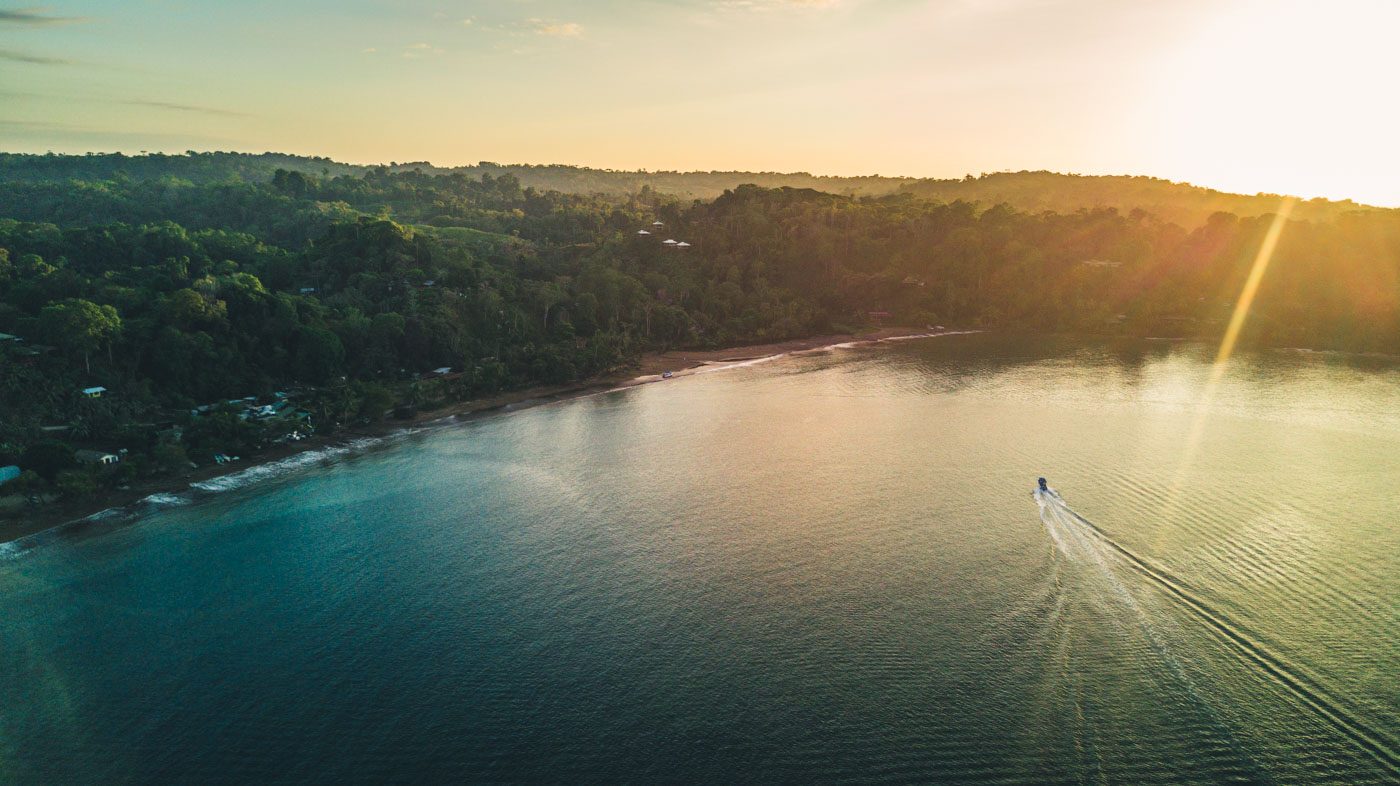
Golfo Dulce
A lesser-known tropical fjord stretching out between the Osa Peninsula and Piedras Blancas National Park on the far south Pacific coast, Golfo Dulce boasts shallow, warm waters populated with migrating humpbacks for more than six months of the year.
The Southern Antarctic Humpback Whales are the most frequently seen species on the Gulfo Dulce, so try to visit between August and October for your best chance of seeing them on a boat trip.
Papagayo Gulf
While not as popular as the south and central Pacific coast regions, Papagayo Bay is an up-and-coming destination for best whale watching tours. Humpback whales can be seen in the Gulf of Papagayo from July until September, with the chance of seeing them increasing in recent years.
You’ll find Costa Rica Whale Watching Tours departing from popular tourist towns like Playa Flamingo, Playa del Cocos, Playa Hermosa and throughout Papagayo Peninsula on the North Pacific coast.
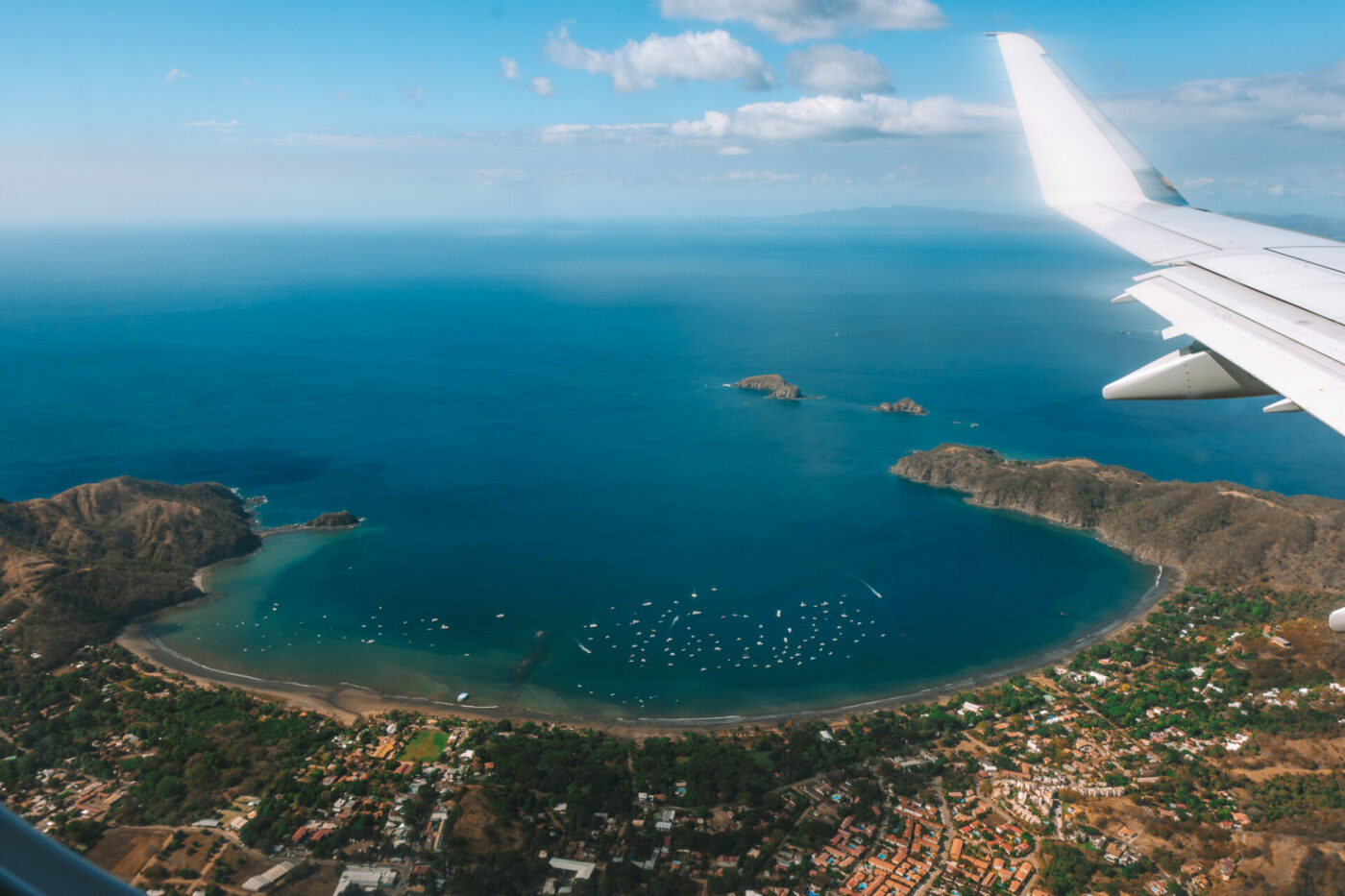
What to Expect During Whale Watching Tours
Whale watching tours usually begin early in the morning offering the best chance to see the whales active in the water. In Costa Rica, whale spotting is typically done in small boats, some seating just 8-10 people and others up to 15 or so.
Note that depending on the season, the boat trip out can be quite bumpy. If you’re prone to seasickness, take some anti-nausea medicine or natural ginger capsules to help settle your stomach. This is especially true if you plan on spending a lot of time looking through a camera lens!
If you’re lucky, the boat will have some shade, but it definitely won’t have bathrooms or indoor seating, so ensure you’re prepared for being exposed to the weather. As with any wild animals, whales are not predictable, so whale spotting is NOT guaranteed.
It can take some time for your captain to locate the whale. However, if you visit Costa Rica during the peak whale months, the chances of seeing whales are high.
If your captain is able to locate whales or dolphin pods, you’ll speed off to observe their behaviour a little closer. However, it’s important to note, that it’s illegal in Costa Rica to jump into the water or disturb the whales in protected waters. Responsible tour operators will obey the personal space of the huge humpback whales and stay 50-100m away.
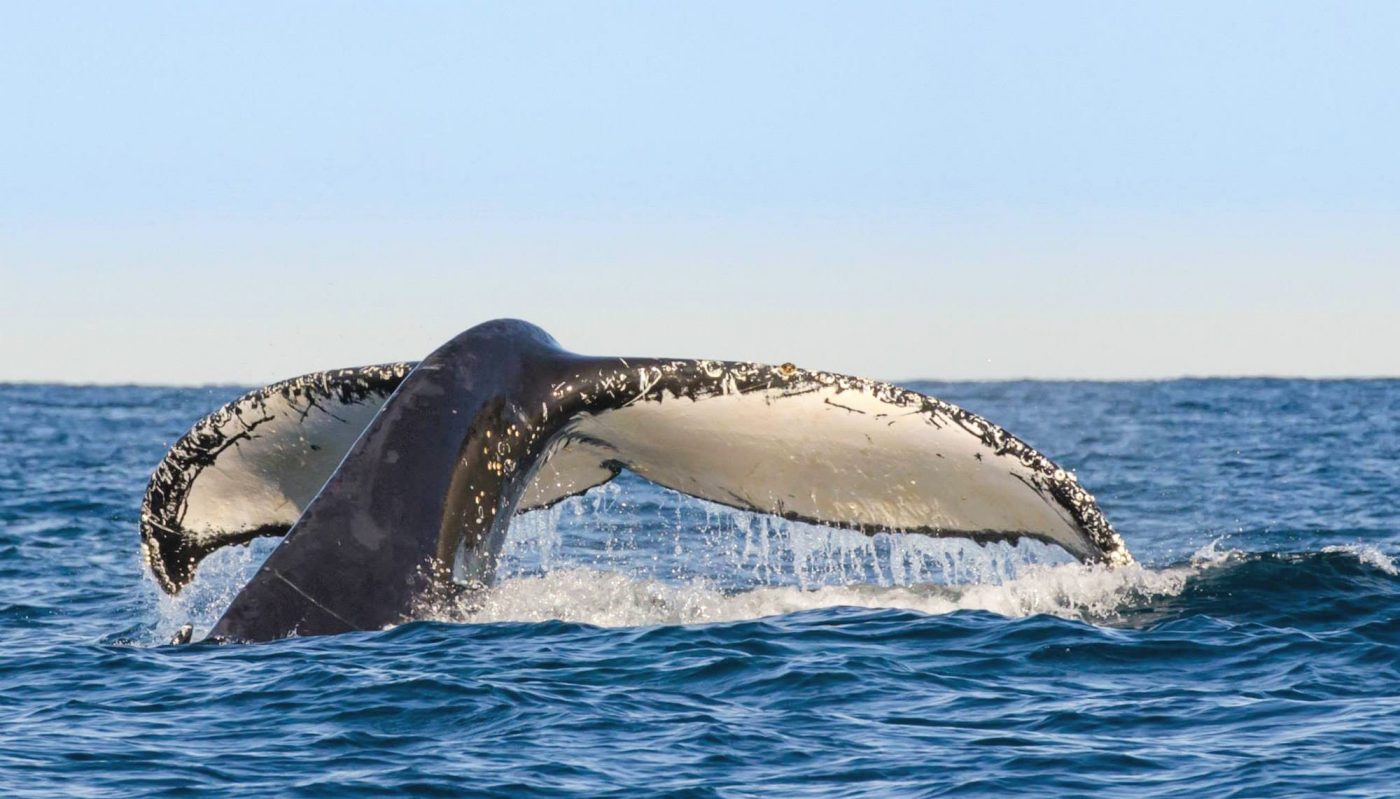
Whale watching in Costa Rica can be an amazing experience. So, if you are planning on visiting Costa Rica during the peak whale season, we highly recommend adding a whale watching experience to your list of activities.

